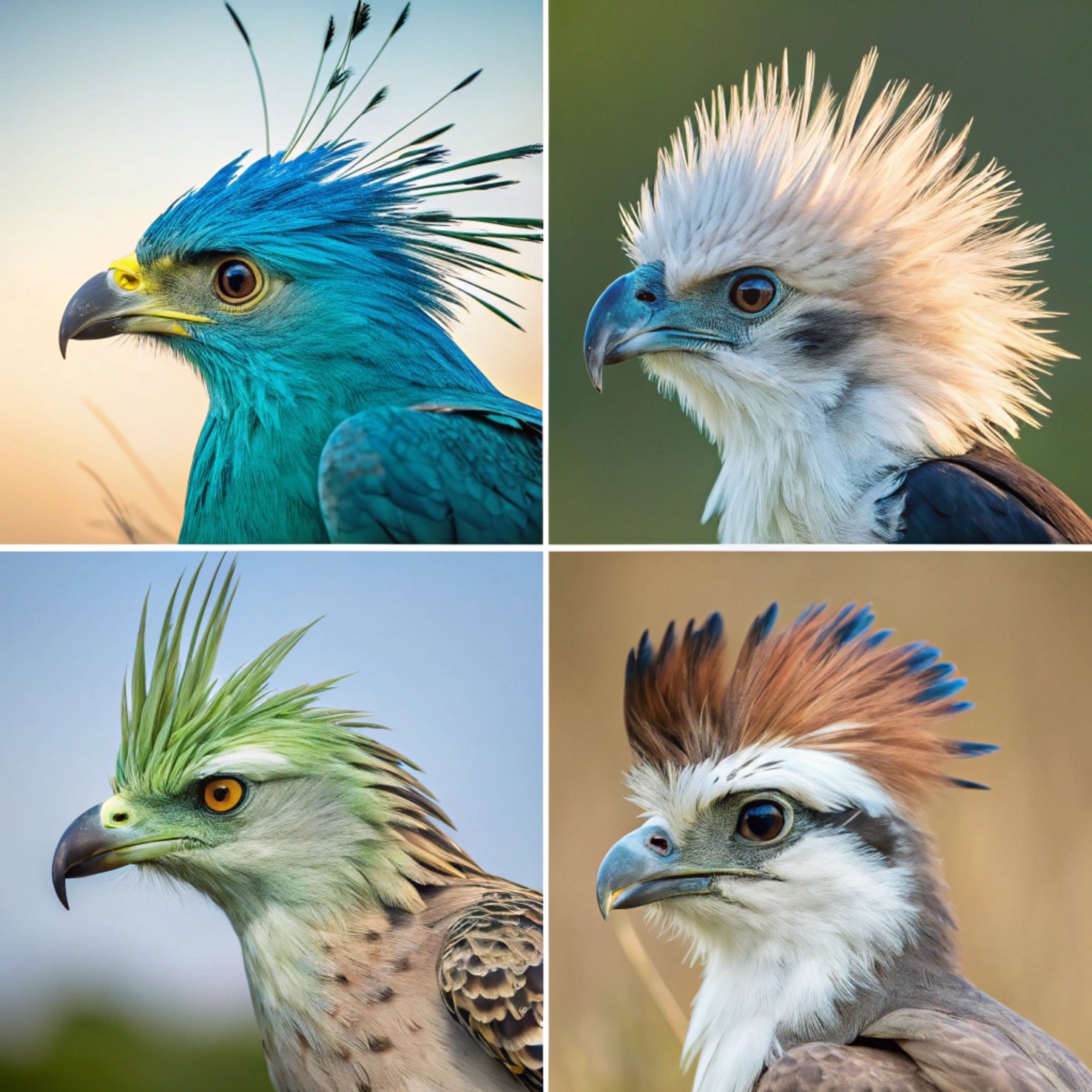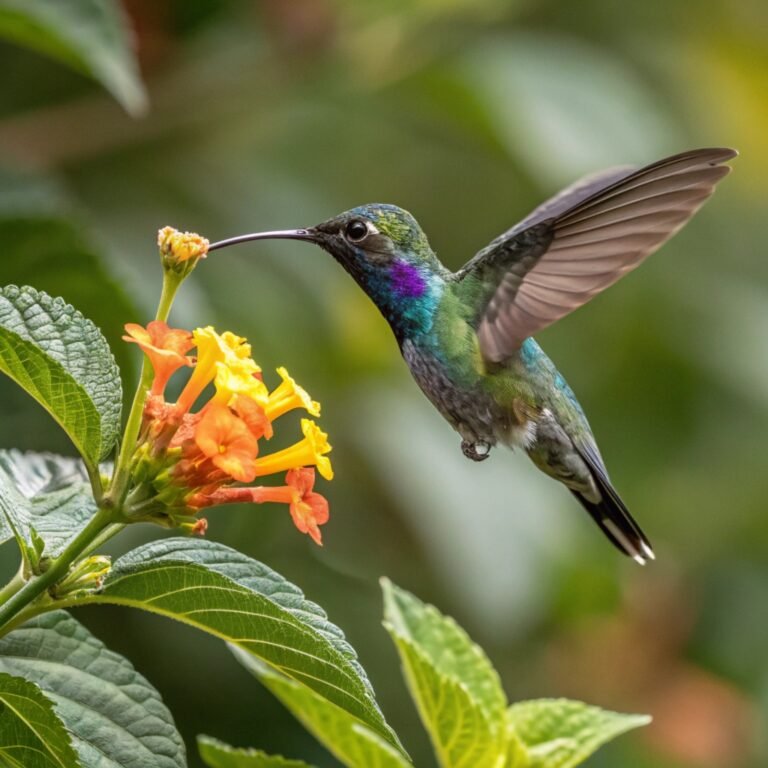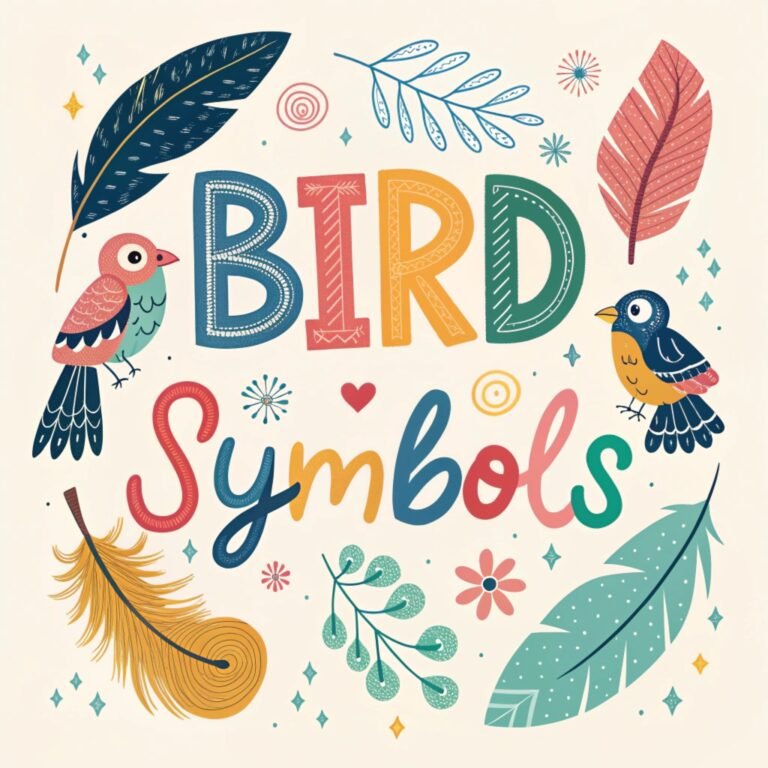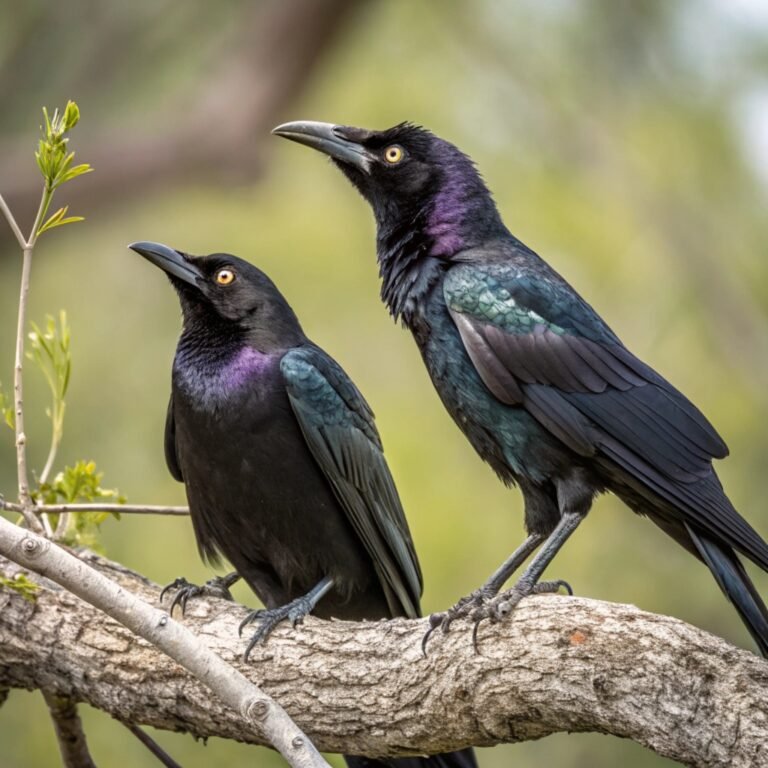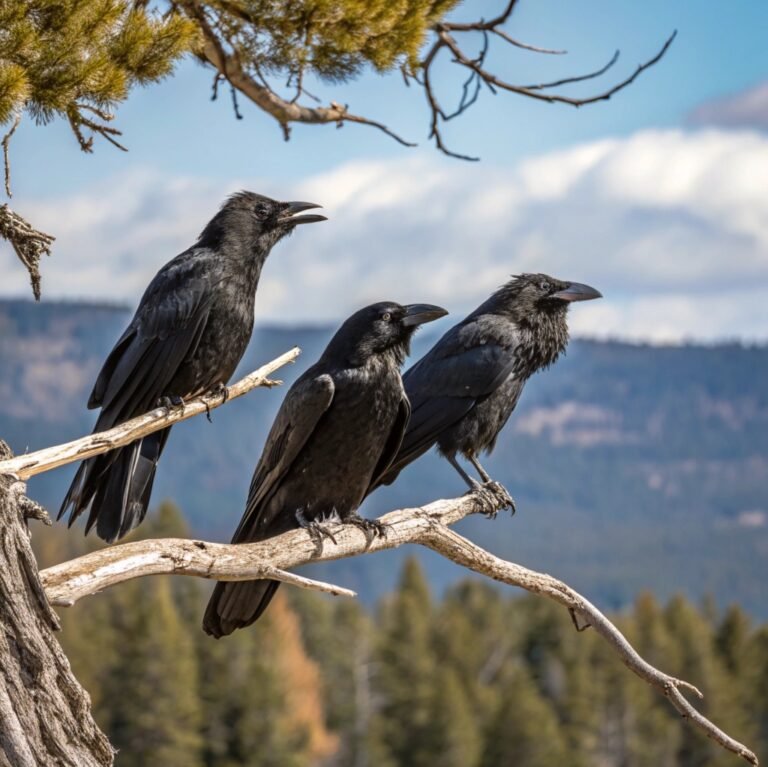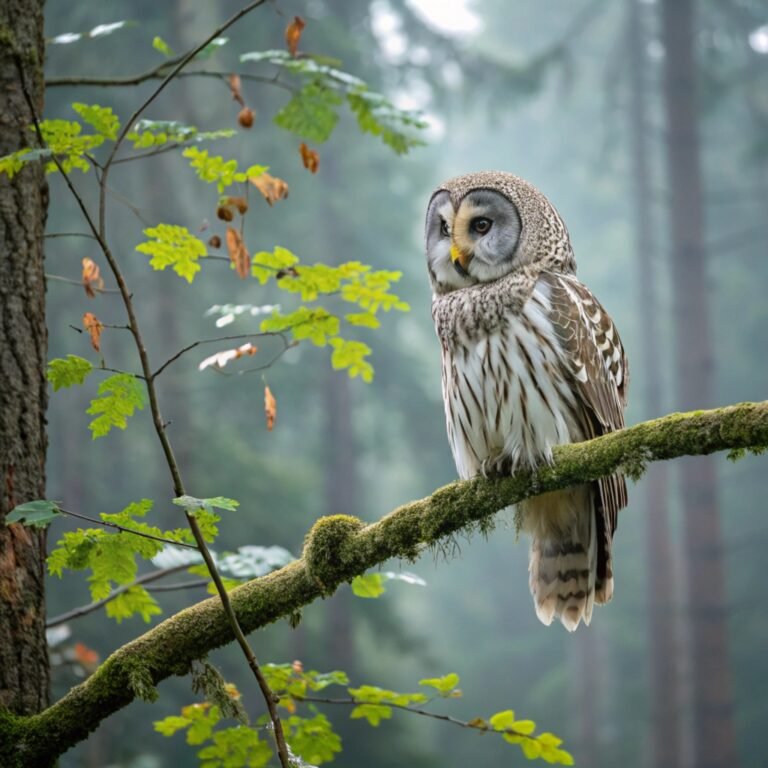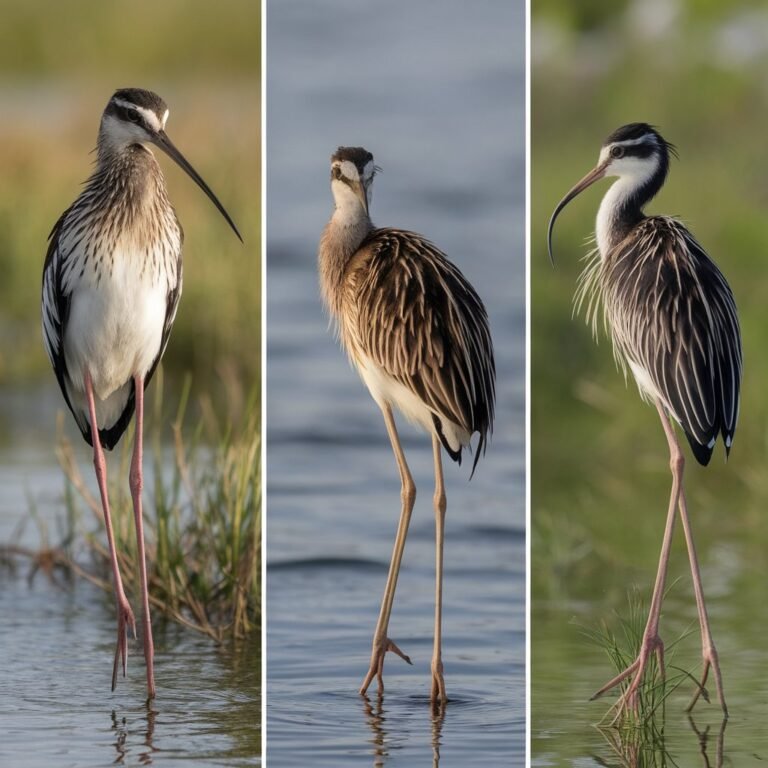13 Magnificent Birds with Mohawks: A Comprehensive Guide to Nature’s Punk Rockers of the Sky
The avian world is full of surprises, and among its most striking members are birds sporting impressive mohawk-like crests.
These feathered punks of the sky not only catch our eye but also serve important biological functions. From courtship displays to territorial assertions, these mohawks play a crucial role in bird behavior and survival.
Let’s embark on a journey to explore 13 of the most fascinating birds with mohawks, delving into their unique characteristics, habitats, and the significance of their distinctive head plumage.
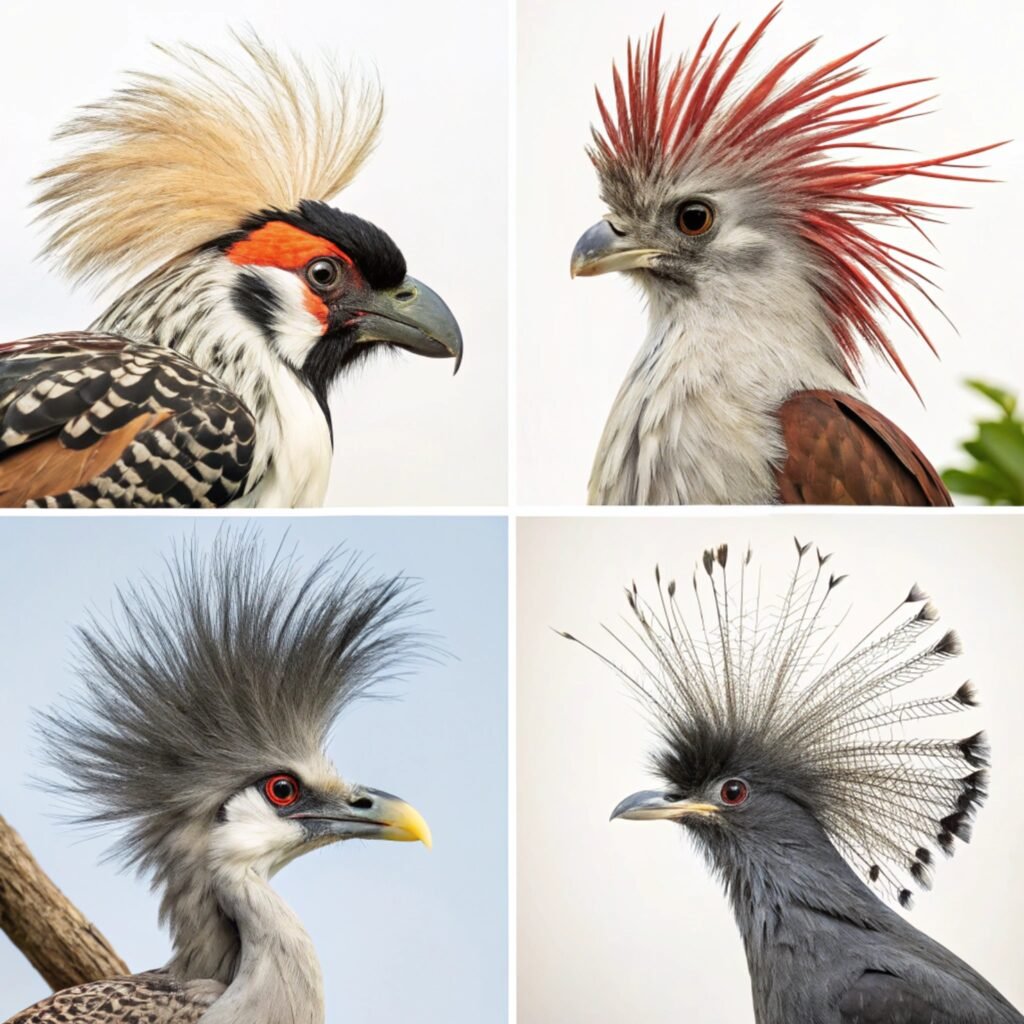
Key Takeaways:
- Diverse Species: Birds with mohawks span various families, from woodpeckers to pigeons, showcasing nature’s versatility in creating unique head adornments.
- Functional Crests: These mohawks aren’t just for show; they serve important purposes in communication, mating rituals, and territorial displays.
- Global Distribution: Mohawked birds can be found across continents, from the tropical forests of South America to the arid regions of Australia.
- Conservation Concerns: Some species, like the Victoria Crowned Pigeon, face threats due to habitat loss and hunting, highlighting the need for conservation efforts.
- Adaptability: These birds have adapted to various habitats, from dense forests to open savannas, demonstrating their resilience and evolutionary success.
- Cultural Significance: Many mohawked birds, such as the Eurasian Hoopoe, have played important roles in human cultures and mythologies throughout history.
- Unique Behaviors: Some species, like the Amazonian Royal Flycatcher, display fascinating behaviors related to their crests, using them in elaborate courtship rituals.
- Varied Diets: From insectivores to frugivores, these birds exhibit a wide range of dietary preferences, reflecting their diverse ecological niches.
- Striking Appearances: The mohawks of these birds come in various colors and shapes, making them some of the most visually appealing creatures in the avian world.
- Scientific Interest: Researchers continue to study these species to better understand the evolution and function of ornamental feathers in birds.
1. The Majestic Palm Cockatoo
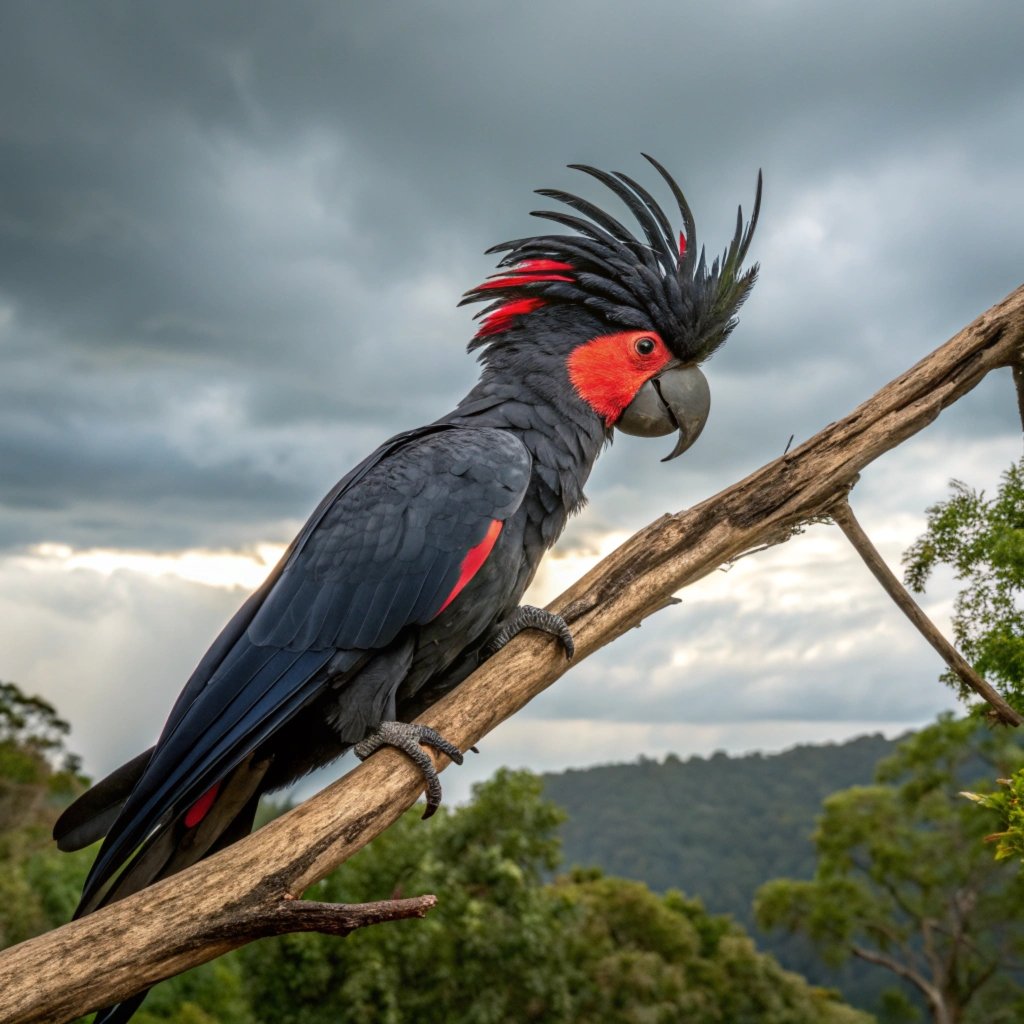
The Palm Cockatoo, also known as the Goliath Cockatoo, is a striking bird native to Australia and New Guinea. This impressive creature stands out with its jet-black plumage and distinctive red cheek patches.
However, it’s the Palm Cockatoo’s mohawk that truly sets it apart. This large, movable crest of feathers can be raised or lowered at will, creating a dramatic display that serves multiple purposes in communication and courtship.
Palm Cockatoos are not just visually stunning; they’re also known for their intelligence and unique behaviors. These birds have been observed using tools in the wild, demonstrating a level of cognitive ability that’s rare in the avian world.
Their powerful beaks can crack open even the toughest nuts and seeds, making them well-adapted to their forest habitat. Conservation efforts are crucial for these magnificent birds, as they face threats from habitat loss and illegal pet trade.
2. The Vibrant Amazonian Royal Flycatcher
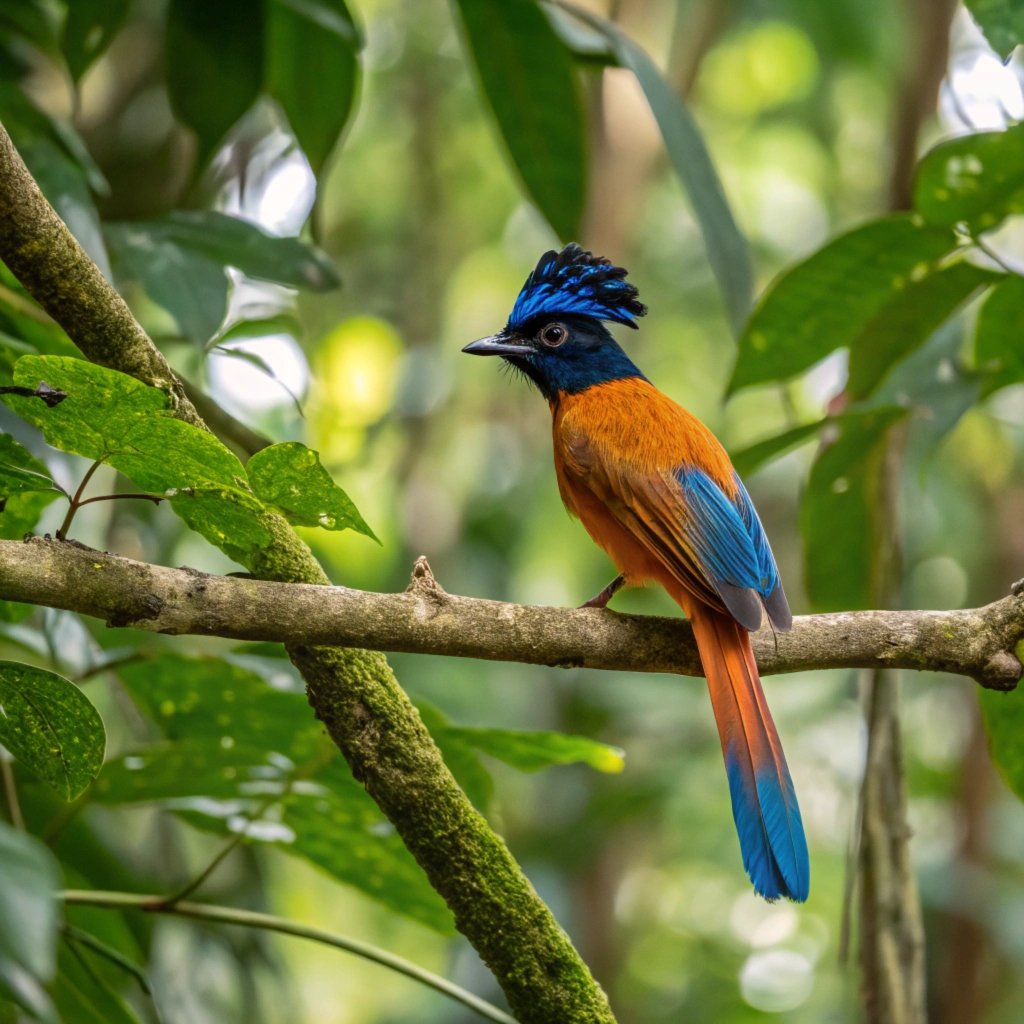
Deep in the Amazonian rainforest dwells the Amazonian Royal Flycatcher, a small bird with an extraordinary secret. While it may appear unremarkable at first glance, this species possesses one of the most spectacular crests in the bird world.
When excited or threatened, the Amazonian Royal Flycatcher unfurls a fan-shaped, brightly colored crest that can be red, orange, or yellow, often with blue tips.
This mohawk isn’t just for show; it plays a crucial role in the bird’s courtship and territorial displays. Males use their crests to impress females and ward off rivals, creating a dazzling spectacle in the dim light of the forest understory.
Despite their striking appearance when displaying, these birds are actually quite elusive and rarely seen with their crests raised. Their habitat in primary and secondary growth forests makes them vulnerable to deforestation, highlighting the importance of preserving Amazonian ecosystems.
3. The Elegant Grey Crowned Crane
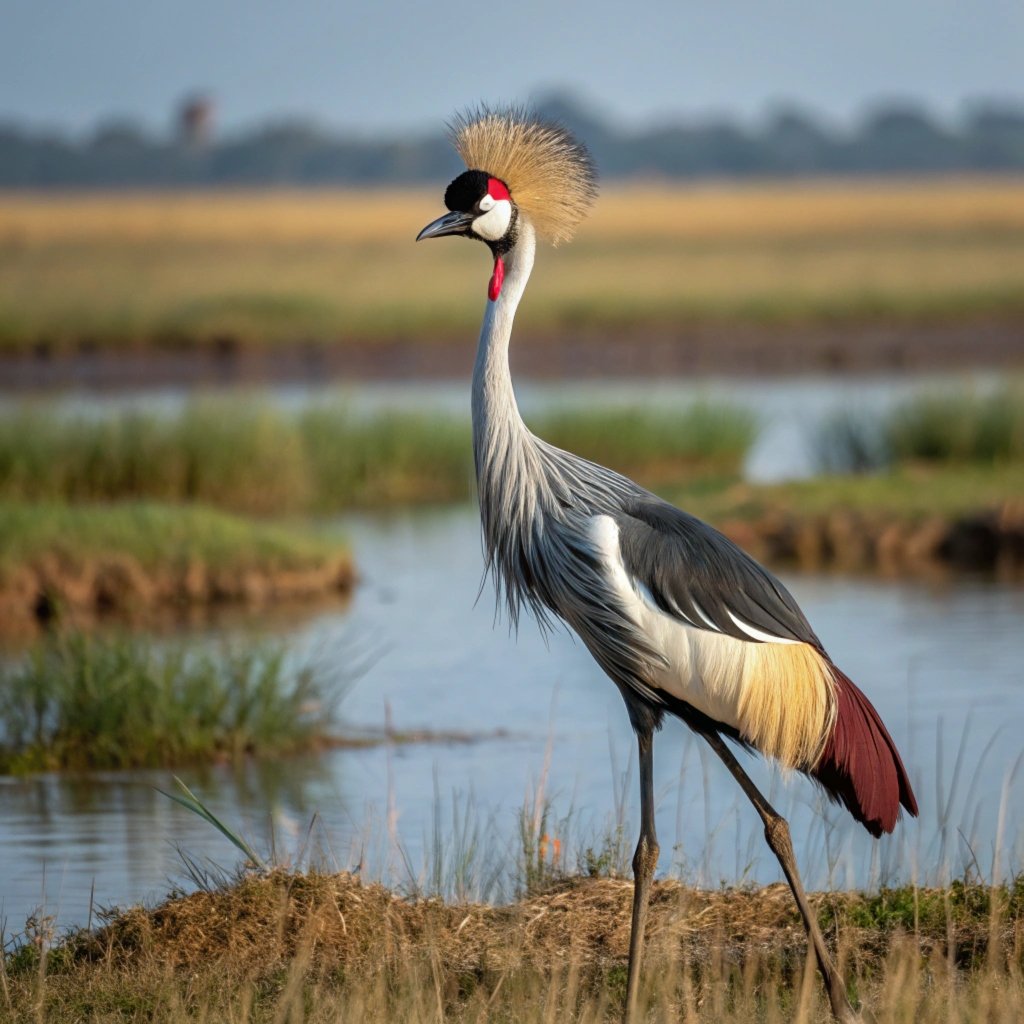
The Grey Crowned Crane is a majestic bird that graces the savannas and wetlands of sub-Saharan Africa. Standing at about three feet tall, this elegant creature is adorned with a golden crown of stiff feathers that forms a distinctive mohawk.
This crest, combined with its grey body plumage and striking red and white facial features, makes the Grey Crowned Crane one of the most visually appealing birds in Africa.
Beyond its beauty, the Grey Crowned Crane plays a significant role in African ecosystems and cultures. These birds are often seen in pairs or small groups, performing elaborate dances that involve jumping, bowing, and spreading their wings.
Unfortunately, habitat loss and capture for the pet trade have led to a decline in their population, making conservation efforts crucial for their survival. The Grey Crowned Crane’s mohawk not only serves as a visual spectacle but also aids in communication between individuals, showcasing the functional aspect of this ornamental feature.
4. The Punk Rock Rockhopper Penguin
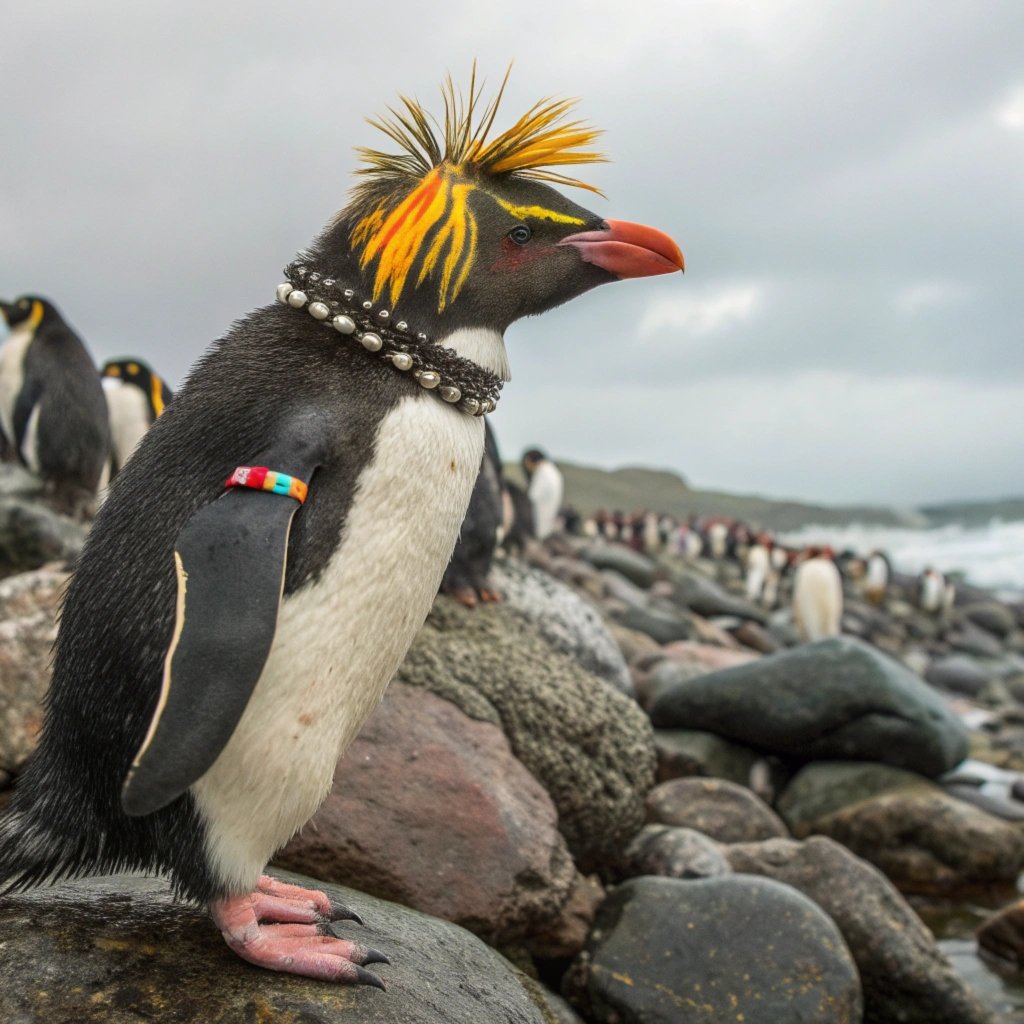
When we think of penguins, a mohawk might not be the first thing that comes to mind. However, the Rockhopper Penguin defies expectations with its spiky yellow crest. These feisty birds, found on subantarctic islands, sport a distinctive mohawk that gives them a rebellious, punk rock appearance.
The crest consists of elongated yellow feathers that extend from above the eyes to the back of the head, contrasting sharply with their black and white plumage.
Rockhoppers earn their name from their unique method of moving on land. Instead of waddling like other penguins, they hop from rock to rock with surprising agility.
Their mohawks play a role in mate selection and species recognition, helping these birds stand out in the crowded colonies where they breed. Despite their tough appearance, Rockhopper Penguins face challenges from climate change and overfishing, which affect their food sources.
Conservation efforts are underway to protect these charismatic birds and their unique ecosystems in the Southern Ocean.
5. The Striking White-Crested Hornbill

The White-Crested Hornbill, also known as the long-tailed hornbill, is a remarkable bird found in the humid forests of West and Central Africa. Its most distinctive feature is undoubtedly its white mohawk, which consists of ruffled feathers that give the bird an appearance reminiscent of a grumpy old man.
This unique crest, combined with its black body and long tail, makes the White-Crested Hornbill one of the most visually interesting birds in its habitat.
These birds are not just visually striking; they also play a crucial role in forest ecosystems. White-Crested Hornbills are omnivorous, feeding on a variety of fruits, insects, and small vertebrates. Their feeding habits contribute to seed dispersal, making them important for forest regeneration.
The hornbill’s mohawk serves multiple purposes, including species recognition and courtship displays. Unfortunately, like many forest-dwelling species, White-Crested Hornbills face threats from habitat loss due to deforestation, emphasizing the need for conservation efforts in African rainforests.
6. The Iconic Pileated Woodpecker
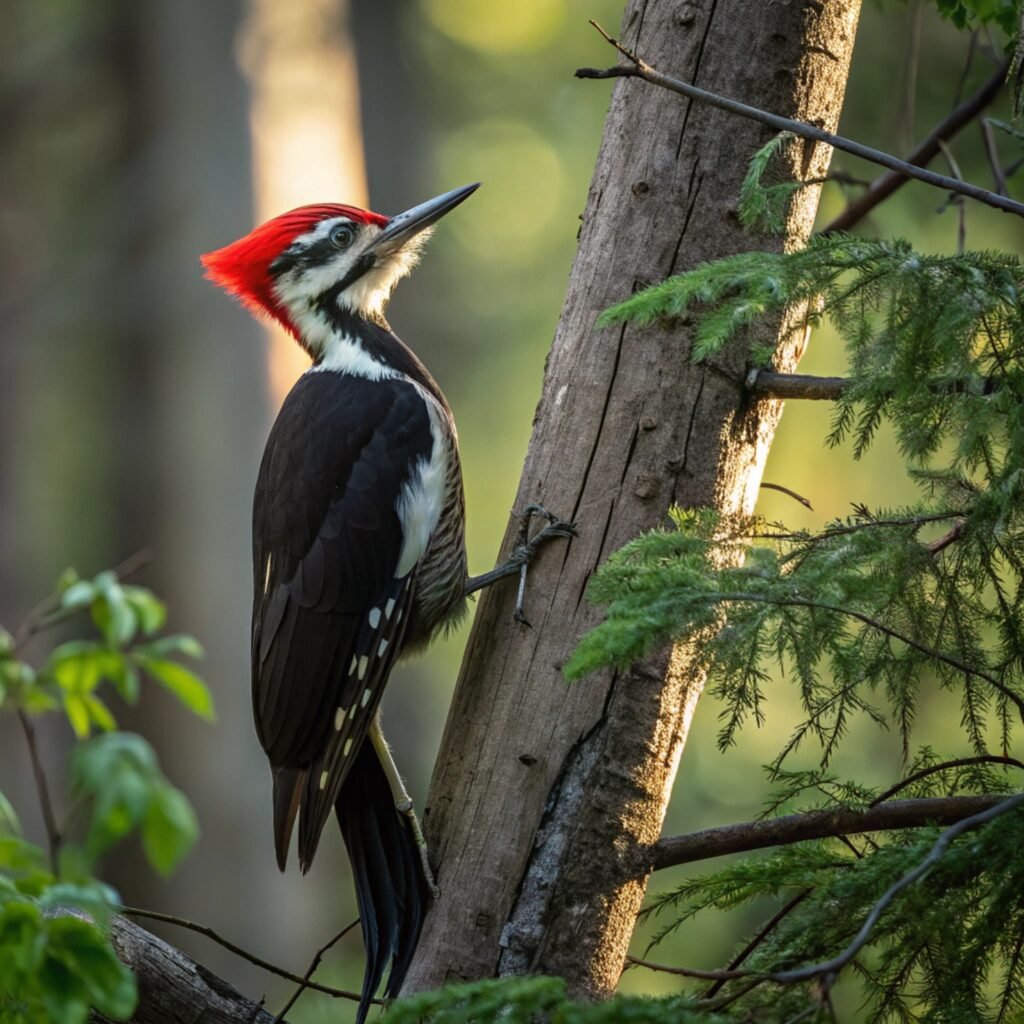
The Pileated Woodpecker is one of North America’s most recognizable birds, thanks in part to its flaming-red mohawk. This large woodpecker, often compared to the cartoon character Woody Woodpecker, sports a distinctive red crest that extends from its forehead to the back of its head.
The crest, combined with its black body and white stripes, makes the Pileated Woodpecker a striking sight in forests across North America.
These birds are not just visually impressive; they play a crucial role in forest ecosystems. Pileated Woodpeckers create large, rectangular holes in trees while searching for their favorite foods: carpenter ants and wood-boring beetle larvae.
These excavations provide nesting and shelter opportunities for many other forest species. The woodpecker’s mohawk serves as a visual signal for territorial defense and mate attraction.
Despite being widespread, Pileated Woodpeckers face challenges from habitat fragmentation and loss of mature forests, highlighting the importance of preserving large tracts of woodland for these and other forest-dependent species.
7. The Exotic Eurasian Hoopoe
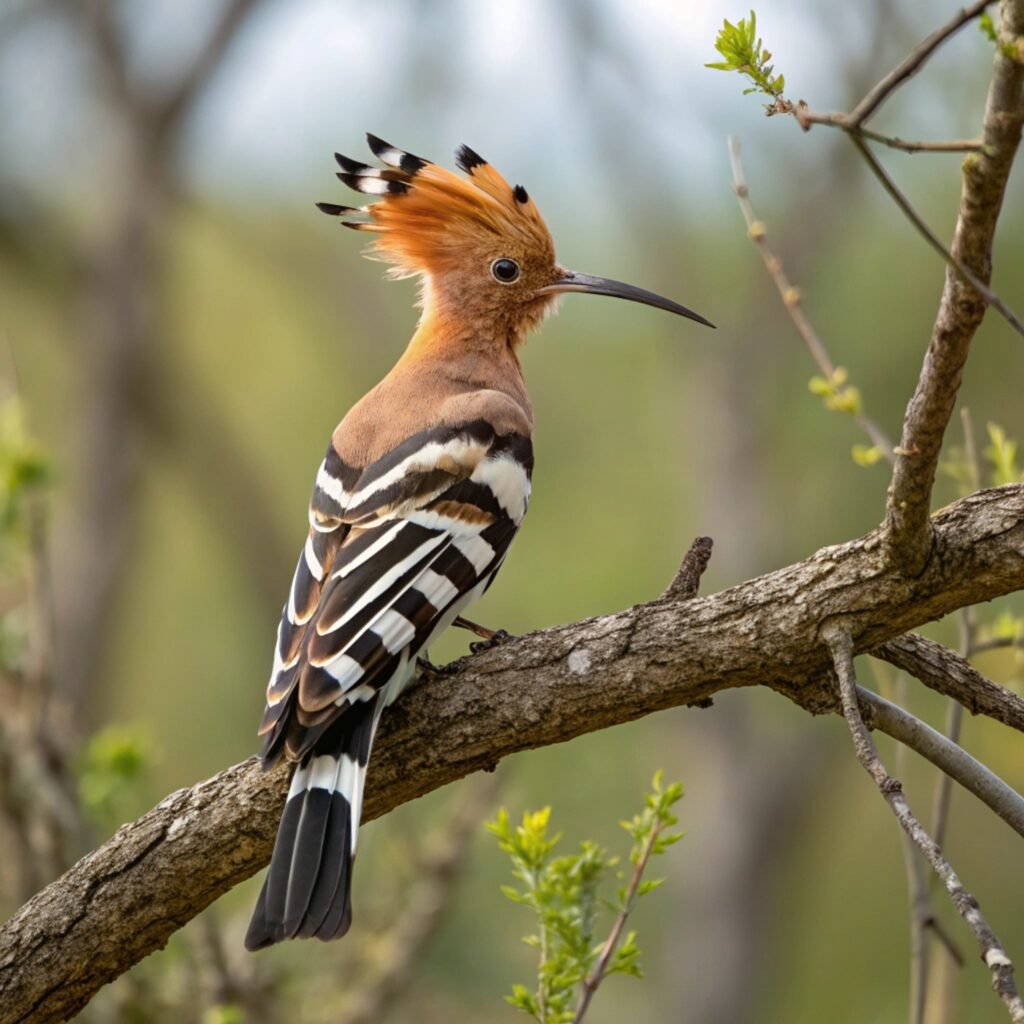
The Eurasian Hoopoe is a bird that seems to have stepped out of a fairy tale, with its distinctive crown-like crest and striking plumage. Found across Europe, Asia, and parts of Africa, this bird sports a mohawk of orange feathers tipped with black, which it can raise or lower depending on its mood.
The crest, combined with its pinkish-brown body, black and white striped wings, and long, curved beak, makes the Hoopoe one of the most easily recognizable birds in its range.
Hoopoes have long fascinated humans, appearing in various cultural mythologies and folklore. These birds are ground foragers, using their long beaks to probe the soil for insects and larvae.
Their unique appearance serves practical purposes beyond aesthetics; the crest is used in courtship displays and as a signal of aggression when raised. Despite their wide distribution, Hoopoes face challenges from habitat loss and pesticide use in some areas.
Conservation efforts focus on preserving the diverse habitats these birds need, from open woodlands to urban parks, ensuring that future generations can continue to marvel at these crowned beauties.
8. The Regal Victoria Crowned Pigeon
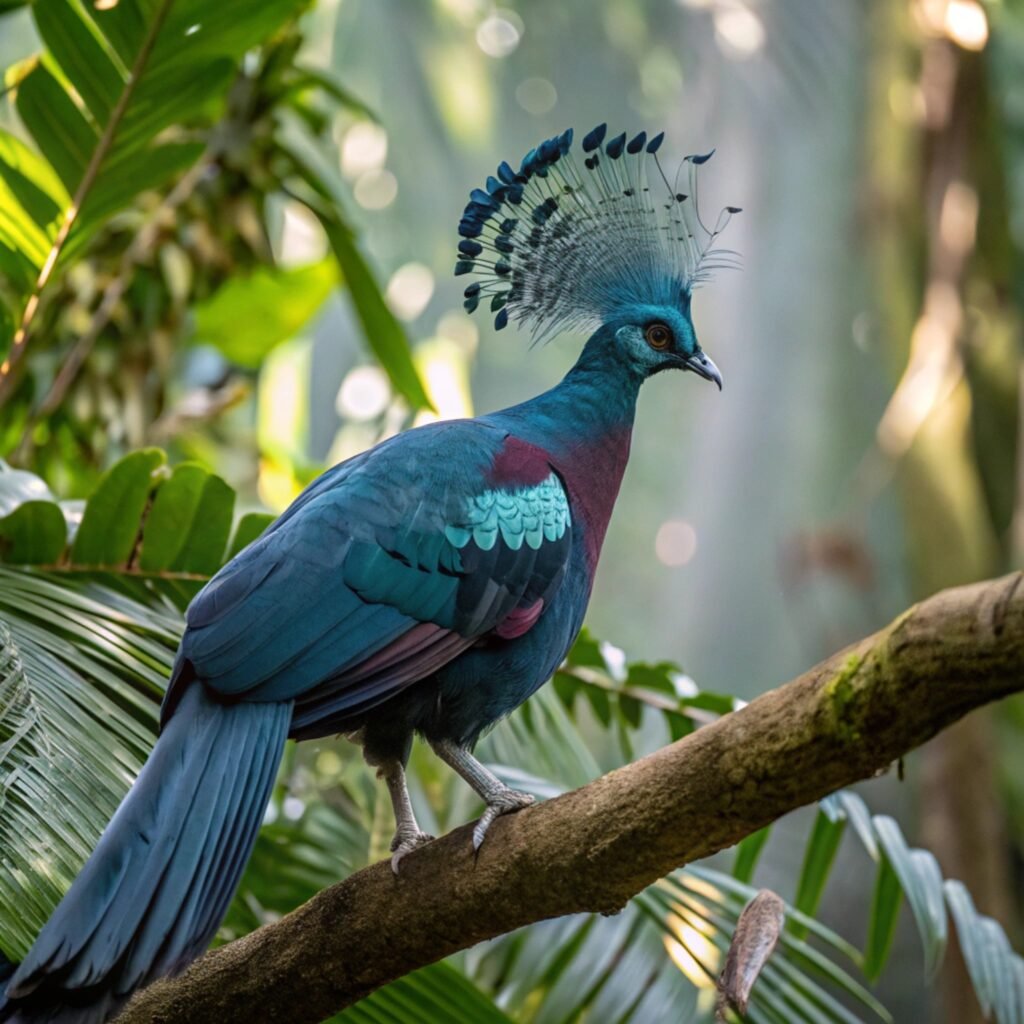
The Victoria Crowned Pigeon is a true marvel of the avian world, boasting a spectacular lace-like crest that resembles an elegant mohawk. Native to the lowland forests of New Guinea, this bird is the largest living pigeon species, with a size comparable to a turkey.
Its most striking feature is undoubtedly the fan-shaped crest of blue-grey feathers adorned with white tips, giving it a regal appearance that justifies its name.
These magnificent birds play a crucial role in their forest ecosystems as seed dispersers, contributing to the regeneration of their habitat. The Victoria Crowned Pigeon’s mohawk serves multiple purposes, including species recognition and courtship displays.
Unfortunately, these birds face significant threats from habitat loss due to deforestation and hunting for their meat and feathers. Conservation efforts are crucial to protect these stunning creatures and their unique forest homes.
The Victoria Crowned Pigeon’s beauty and uniqueness make it a flagship species for conservation, highlighting the importance of preserving New Guinea’s rich biodiversity.
9. The Charismatic Cockatiel
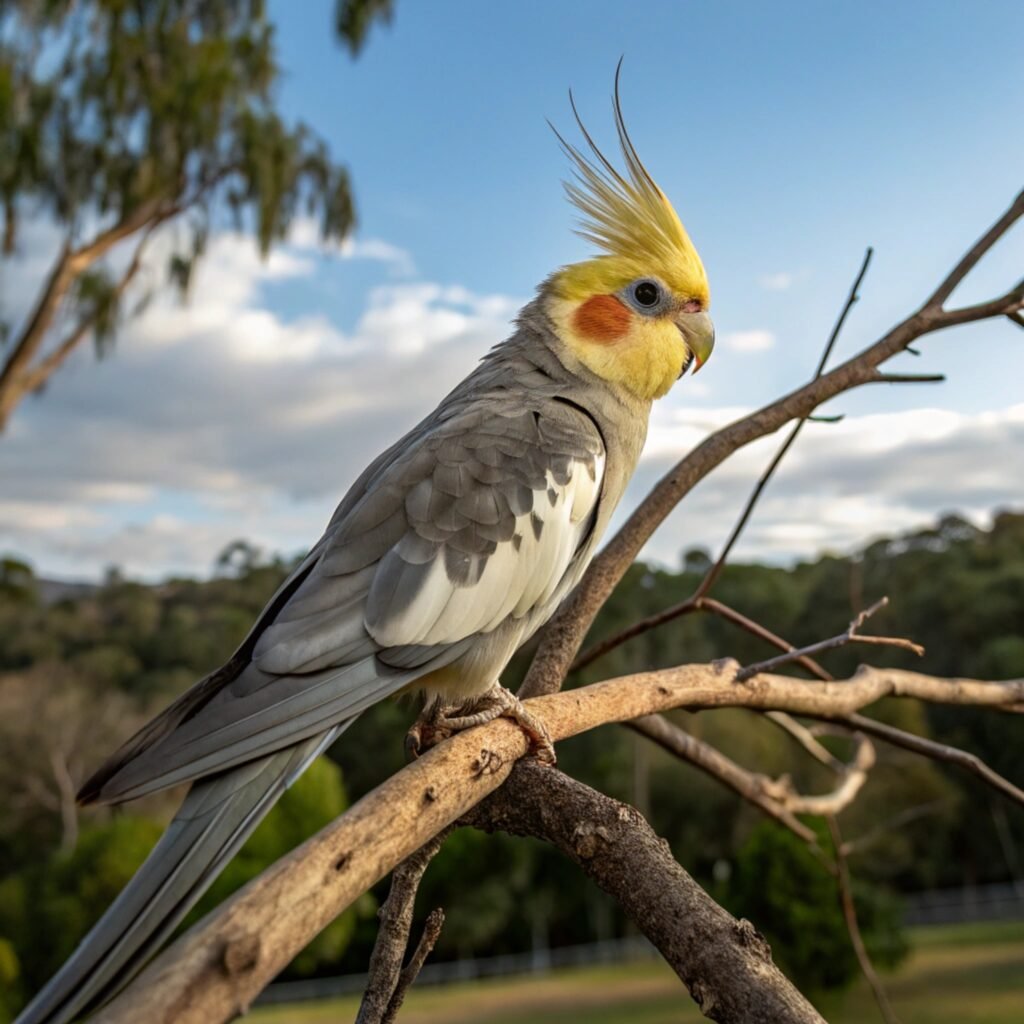
The Cockatiel, a small parrot native to Australia, has become one of the world’s most popular pet birds, thanks in part to its charming yellow and grey mohawk.
In the wild, these birds sport a distinctive crest of feathers that can be raised or lowered to express various emotions and intentions. Male cockatiels typically have brighter yellow faces and more vibrant crests, while females tend to have more subdued coloring.
Cockatiels are not just visually appealing; they’re also known for their friendly and social nature. In their natural habitat, these birds live in flocks, foraging for seeds and grains in open country and woodland areas.
Their mohawks play a crucial role in communication, with raised crests indicating alertness or excitement, and flattened crests signaling relaxation or submission.
While cockatiels are not currently considered threatened in the wild, habitat loss and climate change pose potential risks to their populations. As popular pets, cockatiels also serve as ambassadors for bird conservation, helping to educate people about the importance of protecting wild bird populations and their habitats.
10. The Striking Crested Partridge
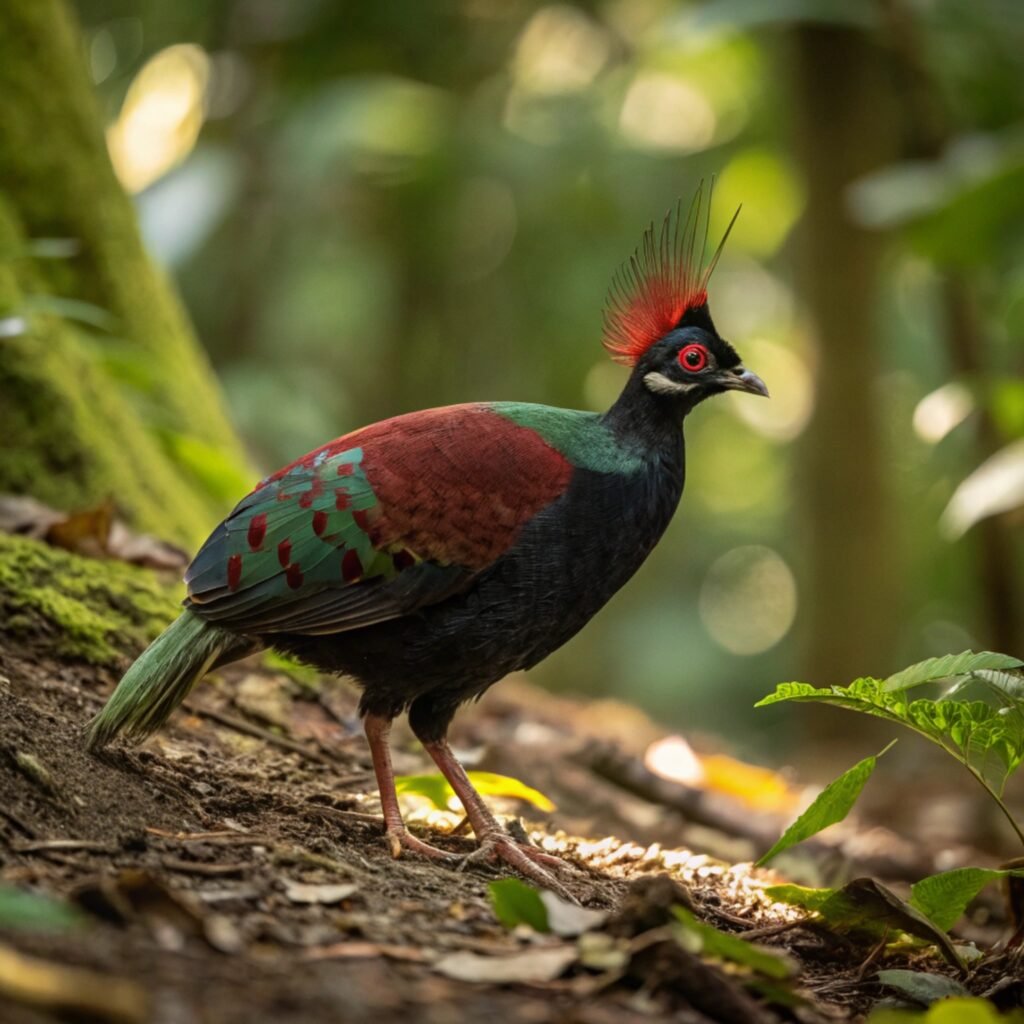
The Crested Partridge, also known as the roulroul, is a small but spectacular bird found in the lowland rainforests of Southeast Asia. What sets this bird apart is its round, fluffy red mohawk, which contrasts beautifully with its dark green body plumage.
Males sport this vibrant crest, while females have a more subdued green head tuft, showcasing an interesting example of sexual dimorphism in birds.
These unique birds play an important role in their forest ecosystems as seed dispersers and prey species for larger predators. The Crested Partridge’s mohawk serves multiple purposes, including species recognition and mate attraction.
Unfortunately, like many rainforest species, these birds face threats from habitat loss due to deforestation and agricultural expansion. Conservation efforts are crucial to protect these striking creatures and their forest homes.
The Crested Partridge’s distinctive appearance makes it a potential flagship species for conservation, highlighting the importance of preserving Southeast Asia’s rich biodiversity and unique forest ecosystems.
11. The Flamboyant Purple-Crested Turaco
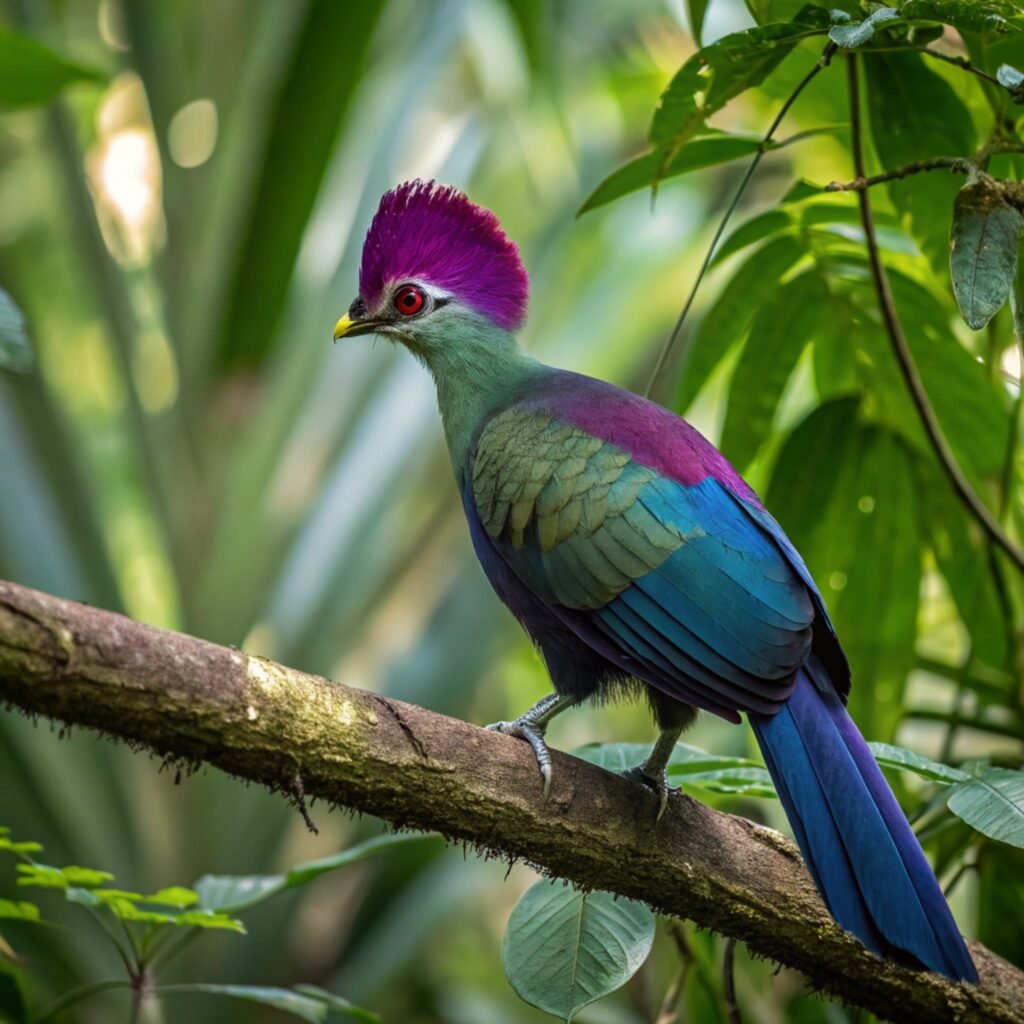
The Purple-Crested Turaco is a stunning bird that adds a splash of color to the forests of eastern and southern Africa.
Its most distinctive feature is its vibrant purple mohawk, which contrasts beautifully with its green body and crimson wing patches. This mohawk isn’t just for show; it plays a crucial role in the bird’s courtship displays and territorial behaviors.
Turacos are unique among birds for their digestion of copper, which gives their feathers their vibrant green and red colors. The Purple-Crested Turaco’s diet consists mainly of fruits, making it an important seed disperser in its forest habitat.
These birds are excellent climbers, using their strong feet to move through the canopy with ease. While not currently considered threatened, the Purple-Crested Turaco faces challenges from habitat loss and fragmentation.
Conservation efforts focus on preserving large tracts of forest to ensure the survival of these colorful canopy dwellers and the many other species that depend on healthy forest ecosystems.
12. The Elegant Southern Crested Guineafowl
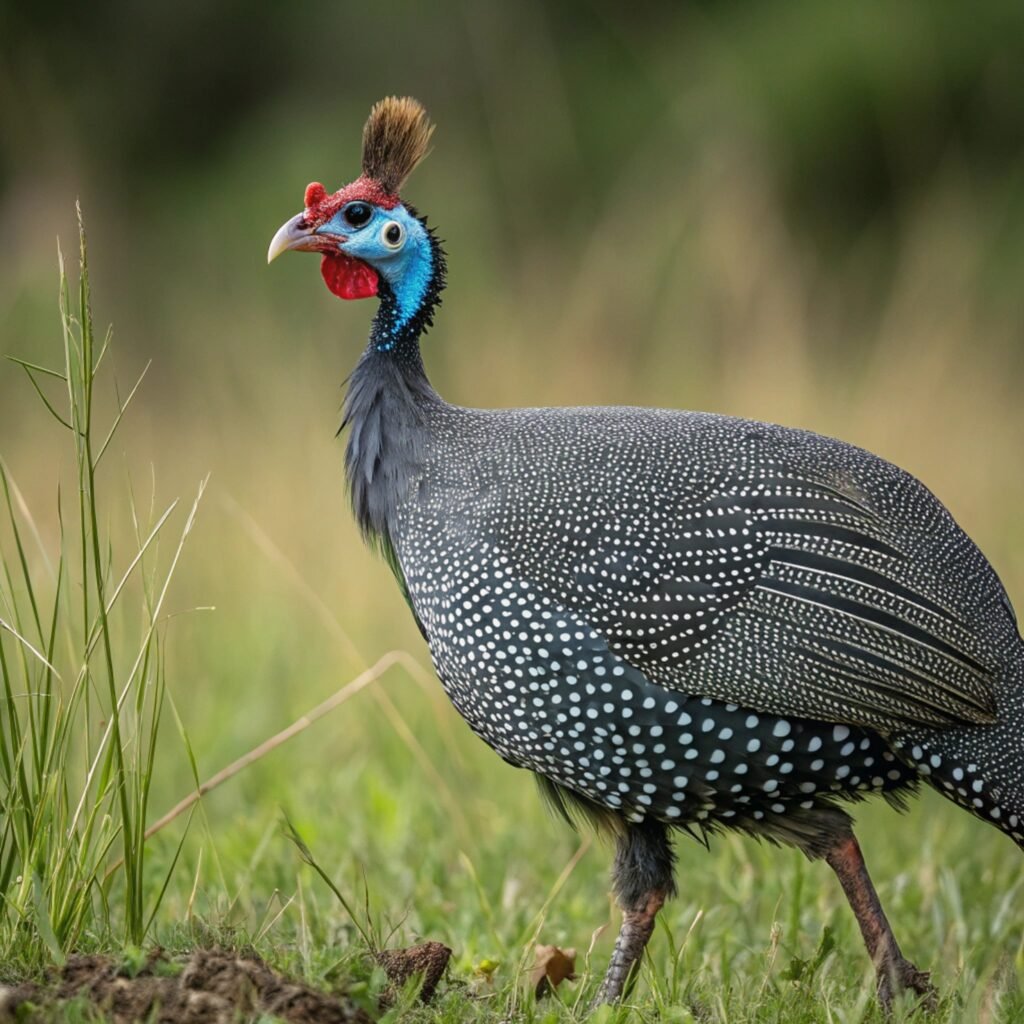
The Southern Crested Guineafowl is a striking bird found in the woodlands and forests of southern Africa. Its most distinctive feature is its black curly mohawk, which stands in stark contrast to its spotted black and white plumage.
This unique combination gives the bird an almost polka-dot appearance, making it one of the most visually interesting members of the guineafowl family.
These birds play an important role in their ecosystems as seed dispersers and insect controllers. They are highly social, often seen in large flocks foraging on the ground for seeds, insects, and small vertebrates.
The Southern Crested Guineafowl’s mohawk serves multiple purposes, including species recognition and mate attraction. While not currently considered threatened, these birds face challenges from habitat loss and hunting in some areas.
Conservation efforts focus on preserving woodland habitats and promoting sustainable hunting practices to ensure the long-term survival of these unique and beautiful birds.
13. The Distinctive White-Crested Helmetshrike
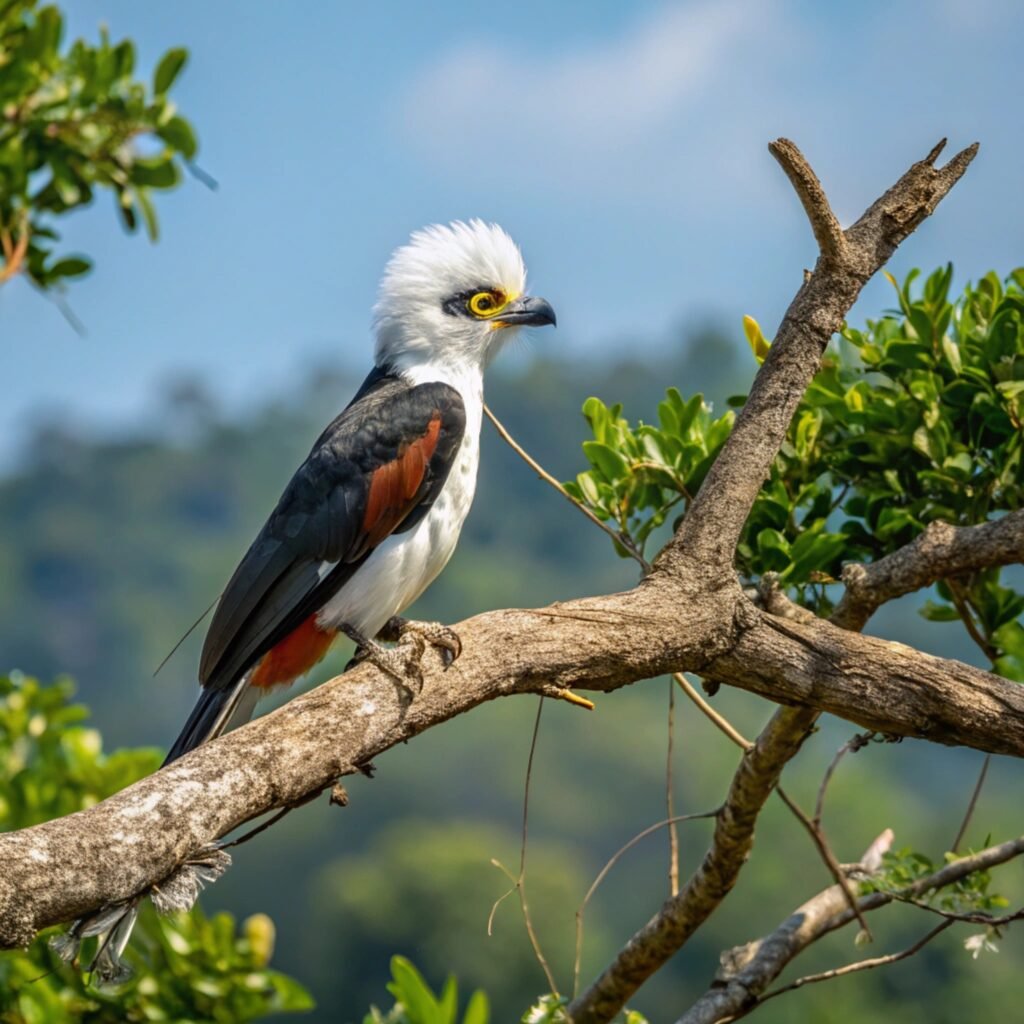
The White-Crested Helmetshrike is a unique bird found in the savannas and woodlands of sub-Saharan Africa. Its most striking feature is its fluffy white mohawk, which contrasts sharply with its black body and distinctive yellow eye-wattles.
This combination gives the bird an almost masked appearance, reminiscent of a feathered superhero. These birds are highly social, often seen in small family groups moving through the trees in search of insects and small vertebrates.
The White-Crested Helmetshrike’s mohawk plays a role in social communication within these groups and in territorial displays. Their cooperative breeding behavior, where young birds help their parents raise subsequent broods, is a fascinating aspect of their social structure.
While not currently considered threatened, these birds face challenges from habitat degradation in some areas. Conservation efforts focus on preserving diverse savanna and woodland habitats to ensure the survival of these unique birds and the many other species that share their ecosystem.
FAQs
What is the purpose of a bird’s mohawk or crest?
A bird’s mohawk or crest serves multiple purposes, including communication, mate attraction, and species recognition. In many species, the crest can be raised or lowered to express different emotions or intentions, such as alertness, aggression, or submission.
Are all birds with mohawks related to each other?
No, birds with mohawks are not necessarily closely related. The presence of a crest or mohawk has evolved independently in various bird families across different continents, demonstrating convergent evolution in response to similar ecological pressures or social needs.
Can all birds with mohawks raise and lower their crests?
While many birds with mohawks can control their crests, not all species have this ability. Some birds, like the Victoria Crowned Pigeon, have fixed crests that are always erect, while others, such as the Cockatiel, have highly mobile crests that they can raise and lower at will.
Do female birds also have mohawks?
In many species, both males and females have crests or mohawks. However, there can be differences in size, color, or prominence between the sexes. In some species, like the Crested Partridge, males have more prominent crests than females, showcasing sexual dimorphism.
Are birds with mohawks more aggressive than other birds?
Not necessarily. While the ability to raise a crest can be used as a display of aggression in some species, many birds with mohawks are no more aggressive than their crestless counterparts. The presence of a mohawk is more related to communication and species-specific behaviors than overall aggression levels.
Do mohawks in birds serve any practical purpose beyond communication?
In some cases, yes. For example, the crest of the Pileated Woodpecker may help protect its skull from the impact of repeated hammering on trees. In other species, the crest might aid in camouflage or help the bird blend in with its surroundings when lowered.
Are there any birds with mohawks that are endangered?
Yes, some mohawked birds face conservation challenges. The Victoria Crowned Pigeon, for instance, is listed as Near Threatened due to habitat loss and hunting. Conservation efforts are crucial for many of these unique and beautiful species.
Can the color or shape of a bird’s mohawk change over time?
In most species, the basic color and shape of the mohawk are genetically determined and don’t change significantly. However, factors like age, health, season, and molt can affect the appearance of a bird’s crest. Some birds may have more vibrant or fuller crests during breeding seasons.
Do birds with mohawks require special care as pets?
Birds with crests, like Cockatiels, may require some additional considerations in captivity. Owners should ensure that cage bars are appropriately spaced to prevent crest feathers from getting caught, and provide adequate vertical space for the bird to fully raise its crest. Regular grooming and proper nutrition are also important for maintaining healthy crest feathers.
How do scientists study the evolution and function of bird mohawks?
Researchers use a variety of methods to study bird crests, including behavioral observations, genetic analysis, and comparative studies across species. They may also use advanced imaging techniques to understand the structure of crests and how they’re used in communication. Evolutionary biologists often study the development of crests to understand how these features have evolved over time in different bird lineages.

Hello, I’m Emily Price, the founder of Birds Affection. As a passionate bird enthusiast and spiritual seeker, I’ve always been fascinated by the symbolic meanings and mystical connections between birds and our lives. On this website, I share my knowledge and insights on the spiritual significance of various bird species, exploring their roles as messengers, guides, and teachers. Through my writing, I aim to inspire and educate others on the profound wisdom and beauty that birds bring to our world. Join me on this journey as we delve into the enchanting realm of bird symbolism and discover the hidden meanings behind these magnificent creatures.

